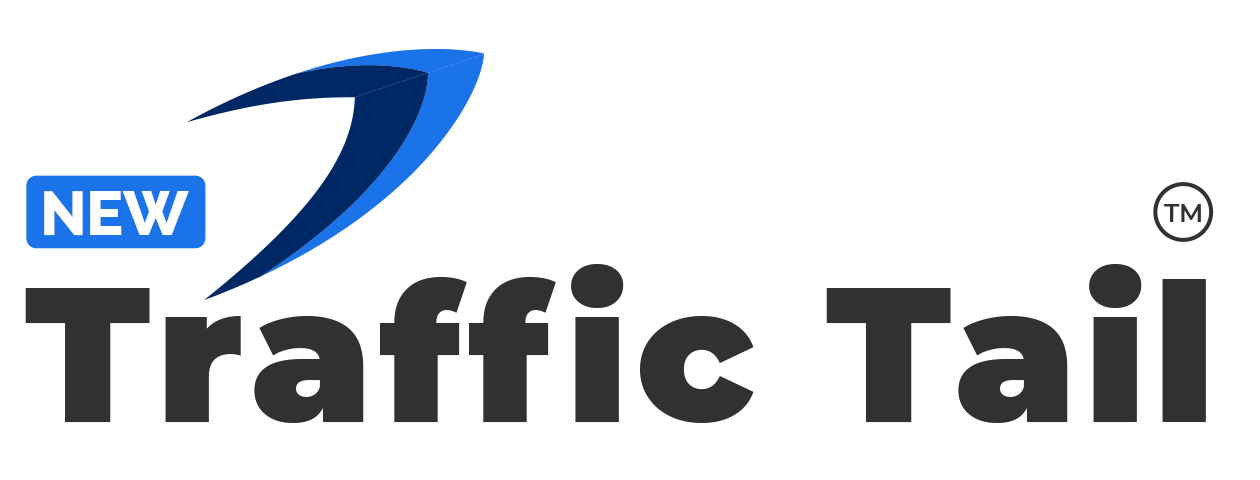Predictive analytics forecasts future outcomes using historical data, statistical algorithms, and machine learning. This involves analyzing past campaign performance (clicks, conversions, spend, etc.) to predict which keywords, ads, and audiences will work best in digital marketing and PPC. These predictions use machine learning (ML), a subset of AI, to “learn” patterns in large datasets without being programmed. ML models update conversion likelihood estimates based on recent clicks or site behavior as new data arrives. PPC managers can better target high-purchase intent, high-conversion users with budget and bids.
Identifying High-Intent Audiences

In PPC, predictive analytics improves high-intent audience targeting. ML-driven tools score and segment users by intent using rich behavioral signals like past site visits, search queries, product page clicks, cart abandonments, and historical conversion rates. An ML model may predict conversion probability using a user’s browsing history (time spent on pricing pages, frequency of visits) and ad engagement metrics (historical CTR, conversion rates). This lead-scoring or “probability-to-convert” model identifies likely buyers.
Google Ads and Meta automate this process with their massive data. Google’s Smart Bidding and Meta’s Advantage+ identify high-intent micro-segments using first-party signals and real-time behaviors. A PPC guide states that AI can identify high-intent audiences through behavior, not just demographics, through clustering, predictive modeling, and behavioral data. An AI engine may identify that users who recently read multiple product reviews, have high running site search activity, and have previously purchased athletic gear are more likely to buy running shoes than everyone else aged 25–34.
Targeting lists are enhanced by third-party AI-audience tools. Proxima AI Audiences helped C4 Energy break through its Meta Ads spending plateau. By analyzing deep customer data, Proxima found “high-intent audiences that Meta wouldn’t go after,” boosting Meta ad spend by 50% and lowering CPA by 20%. One case study found that Meta’s Advantage+ Shopping campaigns, which use automated audience and bid optimizations, had a 12% lower cost per purchase than traditional campaigns. Data-driven, ML-powered audience targeting improves efficiency by focusing spend on users with intent, resulting in higher conversions at lower cost.
Applying Predictive Models to PPC Bidding and Targeting
PPC uses machine learning in various ways behind the scenes. Regression, tree-based ensembles, and neural networks use historical ad performance (CTR, conversion rates, spend, device data, time of day, etc.) to make instant decisions. Google Smart Bidding strategies like Target CPA and Target ROAS set auction bids in real time using advanced ML. These algorithms consider hundreds of signals (device, location, search query, time, past engagement, user intent, etc.). An ML-powered bid engine might increase the bid for a mobile user who searched a high-intent query during peak hours (increasing the likelihood of a sale) and lower bids for users with lower predicted intent, maximizing ROI.
Audience targeting uses ML too. Logistic regression or decision-tree models can predict user clicks or conversions based on age, interests, past behavior, and context. If a user visited the checkout page twice last week and had high engagement, an ML model may classify them as a “hot lead.” The ad system prioritizes or aggressively bids for this user. Model weights (coefficients) are refined over time to improve accuracy. Predictive analytics turns CTR and conversion rate into actionable insights, telling the system which clicks are most valuable.
Modern PPC now integrates supportive AI content tools like random word generator systems, which help advertisers rapidly test content length variations, generate high-performing keyword combinations, and accelerate creative experimentation. These tools streamline ad copy optimization and improve quality scores when paired with predictive bidding models.
Automatic ensemble models (random forests, XGBoost) and deep learning advance this. These can handle complex, nonlinear patterns and interactions (e.g., “Android users between 25–34 who searched for brand X reviews on a weekend afternoon” may convert much higher). According to industry analysis, XGBoost, a gradient boosting tree model, improves performance by learning from past errors and achieves ~94% accuracy in click-prediction tasks. Deep learning neural networks can detect subtle intent signals from images, text sentiment, and browsing sequences, but they need large datasets and computing power. Google says Smart Bidding’s machine-learning models analyze more parameters than a human team could compute, and Meta’s Advantage+ product suite uses AI to automate targeting and bidding with minimal manual input. These models learn from every conversion, improving future predictions and creating a positive performance feedback loop.
Case Studies and Examples
- Google Smart Bidding (Search Ads 360): Columbus Agency’s Australian telecom client is a prime example. Columbus prioritized conversions over spend targets using Google’s Search Ads 360 Smart Bidding, an AI-driven campaign management tool. The machine learning model adjusted bids in real time based on cross-device behavior, conversion path delays, and user context.
- The results were dramatic: CPA dropped 40% and CVR rose 36% in one month. Even with a smaller budget, CPA fell 28% quarter-over-quarter and 36% year-over-year by the second quarter. Figure: Columbus’s Smart Bidding results show conversion and CPA gains. As Smart Bidding optimized bids, the post-paid campaign’s CPA dropped, as shown in Google’s case study. Columbus increased click-through and conversion rates across all devices and halved manual optimization time. This example shows how predictive bidding allocates budget to conversion-prone users, increasing ROI.
- Meta Advantage+ Campaigns: AI-driven Meta ads also perform better. Meta’s Advantage+ Shopping campaigns, which automate targeting and creative with ML, had a 12% lower cost-per-purchase than traditional shopping campaigns. The platform’s dynamic audience targeting is credited by advertisers. Advantage+ can automatically target “new customers who’ve not yet interacted but exhibit shopping intent” with relevant product ads. According to the article, Advantage+ Campaigns increased conversions by 4x for top-of-funnel audiences. While Meta’s case studies (e.g., Italian retailer Unieuro) report greater gains (e.g., 83% lower cost per purchase with Advantage+)[^fn1], independent results show that AI optimization and broad targeting can attract more buyers at lower costs.
- Third-Party AI Tools: Specialized AI tools are emerging beyond platform-native AI. A DTC media buyer used Proxima AI Audiences to break a Meta spend ceiling. The advertiser increased monthly Meta spend by 50% and lowered CPA by 20% using a predictive audience model based on brand customer data. Automated bid-management software like Marin, Kenshoo, and Skai optimizes bids across channels using ML, and Adzooma and Optmyzr provide predictive budget reallocation and alerting. In summary, ML can now inject “foresight” into manual rules by continuously testing hypotheses (e.g., “increase bid 10% for device=mobile leads to more conversions”) and learning which adjustments improve outcomes without human intervention.
Key Metrics and Tools for Predictive Optimization
Marketers use metrics and tools for predictive analytics. CTR, CVR, CPC, CPA, and ROAS are key PPC performance indicators. Predictive models like Smart Bidding target CPA and conversion value. ML tools recommend bid adjustments or audience shifts by predicting how bids or targeting will affect these metrics. CPA and ROAS are tracked over time to determine a true AI lift, which is a sustained decrease in CPA and an increase in ROAS after automated optimizations are enabled. Analysts can use predictive insights (e.g., “Projected 15% lift in sales if this bid is increased”) to adjust budgets.
Nearly every ad platform has AI tools. Smart Bidding (Target CPA/ROAS, Maximize Conversions) in Google Ads; Performance Max uses ML across search, display, and video. Auto-optimize creative, placement, and audience with Meta’s Advantage+ suite. Many platforms specialize in predictive PPC management beyond native tools. RevvGrowth lists google ads agency Smart Bidding, Meta Advantage+, Adzooma, Optmyzr, Skai (formerly Kenshoo), Marin Software, and Revealbot as top AI PPC tools. These offer real-time automated bidding, audience forecast dashboards, and anomaly alerts.
Also important are analytics and data-integration tools. Predictive models use CRM and website analytics data, and Google Analytics or CDP segmentation can define seed audiences for lookalike modeling. Crediting past touchpoints through attribution modeling builds training data. Simple ML models can quickly analyze spreadsheets with campaign performance data. Industry advice states that 10,000 clean, relevant data points outperform 100,000 messy ones. Advertisers use dashboards to track KPIs and compare pre- and post-AI performance. One expert says predictive PPC ROI is measured by CPA, ROAS, and conversion rates before and after automation. Improvements in these metrics (and reduced ad waste) indicate success.
Comparing ML Models in PPC
ML models have different trade-offs. Linear/logistic regression, decision trees, XGBoost, and neural networks are common models. The table below lists their PPC pros and cons:
|
Model |
Advantages |
Disadvantages |
|
Linear/Logistic Regression |
Simple and fast; highly interpretable (yields clear coefficients); works well even with small datasets (e.g., early campaign tests). Provides a transparent baseline for ad performance. |
Assumes linear relationships; can miss complex patterns or interactions. Often less accurate than ensemble methods (though one study showed logistic models achieving >93% accuracy in click prediction). |
|
Random Forest |
Ensemble of decision trees: robust to noise and overfitting; handles mixed data (numerical and categorical) with minimal prep; delivers strong accuracy for CTR/CVR prediction. Provides feature importance to highlight key factors. |
Less interpretable than a single tree; slower to train/predict on very large data. Requires more data (on the order of 10K+ points) for stable results. Can still struggle if the data is extremely unbalanced or evolving. |
|
XGBoost (Gradient Boosting) |
Extremely powerful for tabular PPC data: builds sequential models to correct errors. Often yields the highest accuracy (e.g., ~94% in click prediction). Fast inference once trained; excels at capturing complex interactions and driving bid optimizations. |
Complexity: needs careful hyperparameter tuning and feature engineering. Risk of overfitting if not regularized. Requires large datasets (e.g., 50K+ samples) and computing power to train optimally. Not easily interpretable by default. |
|
Neural Networks (Deep Learning) |
Capable of modeling highly nonlinear, high-dimensional patterns. Useful when ads involve multimedia (images, text, video) or cross-platform signals. Can improve performance in large-scale campaigns (e.g., Google found video ads with deep learning had 17% higher ROAS). |
Data-hungry: typically need 100K+ training examples. Black-box models: very hard to interpret decisions. High computational cost (training on GPUs). Overkill for simpler PPC tasks; best used only when data and scale justify it. |
No single model is best for all PPC tasks. In practice, marketers often start with a simple logistic regression (quick to set up, easy to explain) and then move to ensembles as data volume grows. According to one expert, “if XGBoost only improves accuracy by 2% over logistic regression, you might decide the additional complexity isn’t worth it”. Many vendors’ tools effectively use hybrid approaches (e.g., an auto-ML pipeline that chooses the right algorithm for the job).
Read More
Google Guarantee Program: A Futuristic Tool to Build Trust for Your Business
Conclusion
Machine learning and predictive analytics are changing PPC. These technologies help advertisers predict which users will buy and how to spend each dollar by turning mountains of performance data into foresight. AI-driven bidding and targeting can enhance conversion rates, reduce costs, and free up strategic time for brands. Marketers must strike a balance between automation and oversight to ensure data quality, user privacy, and the ability to detect anomalies and creative nuances through human intervention.
As ad platforms gradually integrate AI (e.g., Google’s Performance Max and Meta’s Advantage+ features), those who use predictive analytics wisely will win. To verify gains, integrate first-party data, test machine learning strategies, and monitor key metrics (CPA, ROAS, etc.). In an environment where every click costs, predictive models help PPC managers prioritize high-intent opportunities. When done right, this leads to smarter campaigns, higher ROI, and sustained growth despite rising competition and new consumer behaviors.



